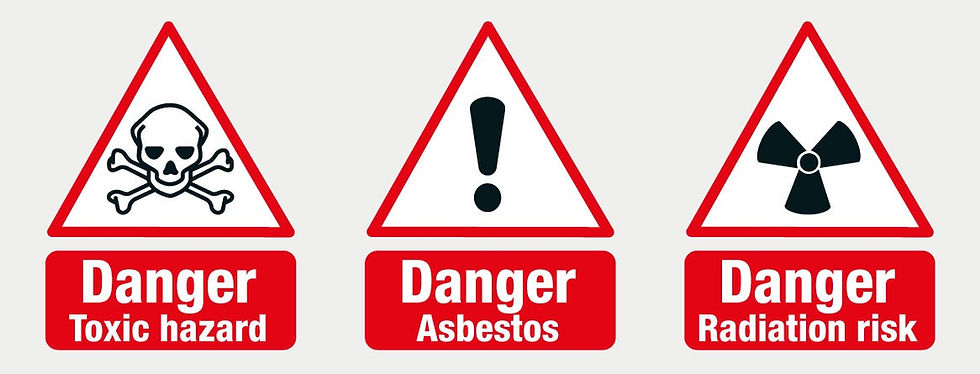What Is COSHH In Simple Terms ?
- Maria Garcia
- Oct 19, 2022
- 3 min read
Updated: Feb 24, 2023

COSHH stands for Control of Substances Hazardous to Health and is used in hospitals, schools, and just about any other place where workers and members of the public congregate.
COSHH was amended in 2002 and serves as a legislative framework to assist companies in protecting their employees and members of the general public from any toxic substances. In addition to restricting exposure, the laws strive to provide adequate protection and emergency response equipment where necessary.
The restrictions, developed by the Health and Safety Executive, encompass compounds used in anything from small offices to huge pharmaceutical companies. COSHH covers everything from dangerous acids used in laboratories to ordinary cleaning chemicals. Furthermore, while detailing the dangers and safeguards for each drug may appear daunting, the HSE has happily supplied industry-specific guidelines to assist.
Regardless of the link between COSHH and EU legislation, COSHH regulations are unlikely to change significantly in 2021 and beyond. However, because several aspects of COSHH are based on EU regulation, there may be some minor adjustments in the future.
Hazardous substances are those that have the potential to cause harm. Depending on the danger they pose, they may be classified as an irritant, corrosive, poisonous, or health threat. Hazardous substances can harm your health if they come into touch with your skin or eyes, or if you inhale, swallow, or inject them. While toxic chemicals are unlikely to be injected by your personnel, they can enter the body's bloodstream through cuts and open wounds.
One of the key requirements of the COSHH is to prevent, or at least reduce, exposure to hazardous substances. Limiting hazardous material exposure can make your workplace a safer place by preventing accidents, injuries, and work-related illness. As an employer, you are responsible for putting control measures in place to minimise or reduce your employees' risk exposure.
In addition to monitoring the control measures in the workplace, you may choose to monitor your employees' health through health surveillance. Health checks, tests, examinations, and questionnaires can give information about the health of your staff and assist you in detecting and evaluating health threats and management measures.
While the COSHH attempts to prevent accidents, you must have a strategy in place to deal with expected incidents and emergencies. To deal with emergencies like casualties and hazardous substance spills, you'll need the correct equipment, procedures, and people on-site. Whenever harmful products are spilled, you must also have plans in place to deal with any waste generated in order to avoid more incidents.
COSHH is critical for business owners for a lot of reasons. For starters, it enables them to properly assess the working environment that they provide to their employees, resulting in a safer workplace for employees, visitors, and members of the general public.
Millions of people operate in environments that expose them to hazardous products, and the repercussions of poor management, poor safety, and accidents can be fatal. Even exposure to hazardous working conditions might result in fatal diseases such as asbestosis. Additionally, hazardous compounds might cause occupational damage and skin diseases during work.
COSHH applies to practically every organisation and covers substances and preparations that have the potential to harm health if swallowed, inhaled, absorbed by, or come into contact with, the skin or other body membranes. A hazardous substance can exist in a variety of states, including vapours, fumes, dust, fibres, liquids, pastes, flora and fauna, and pathogens such as bacteria or viruses like Covid19.
Employers must understand COSHH since it is not only a legal necessity, but it will also help assure wellbeing, a healthier workforce, prevent accidents, enhance productivity, and save expenses from claims, work-related sick leave, and eventually by not having to replace important employees.


Comments